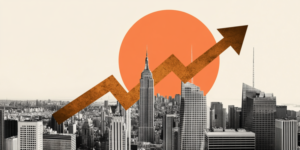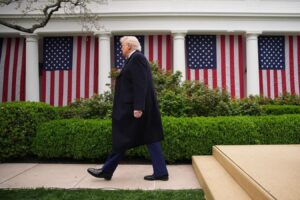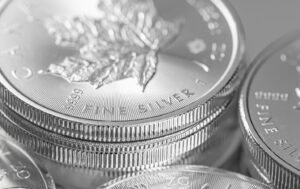If you feel like you have no idea what anything’s supposed to cost anymore, you’re not alone. The pandemic and subsequent bout of inflation sent prices all over the place, and now we’re facing down whatever is going on with tariffs at any given moment. Unfortunately, our collective state of sticker “Huh?” is likely to get worse. Thanks to a whipsawing economic landscape and the magic of technology, prices can change faster than ever — the price you see in the morning may not be the same that same afternoon. Maybe that new price tag is the result of changing supply and demand dynamics. Maybe it’s tariffs. Maybe it’s corporate funny business. The unfunny part is that it’s impossible for many consumers to know.
You might remember the brief dustup around Wendy’s and dynamic pricing last year. Its CEO said on an earnings call that the company was going to test out price variations and AI-enabled menu changes, and the internet did a little bit of a freakout. The episode was a sign of the times: Rapid-fire price changes are everywhere. Thanks to digital price tags, QR codes, and the shift to online shopping, it’s easier than ever for companies to move prices at the drop of a hat. The pandemic helped firms get more agile at reacting to shocks to the system. Instability represents a prime opportunity to make adjustments, including to a business’ benefit.
“Given this really uncertain, volatile environment, if you’re a company who’s been thinking of doing dynamic pricing, it could be a good opportunity,” said Z. John Zhang, a marketing professor at the University of Pennsylvania’s Wharton School of Business who studies pricing strategies and targeting. “This could be a good occasion, a good excuse, an alibi for them to move in that direction.”
It used to be the case that dynamic pricing — meaning the price of something moving up or down based on market conditions — was largely reserved for flights, hotels, and Ubers. Consumers didn’t love the idea their airfare in July was going to run them double what it would in February, but they got it — thus are the rules of supply and demand. But variable pricing is creeping across the economy, including places where it feels a little less understandable. Now, we’re in a super-dynamic environment, given the uncertainty emanating from the White House and the global economy. In turn, it’s a moment for a super-dynamic approach to prices.
Volatility is always a part of business, but now we’re facing a “trifecta of volatility,” said Craig Zawada, chief visionary officer at Pros Holdings, a price optimization company. First, costs are changing quickly — in the past, a company might negotiate once or twice a year with a supplier, but now they’re having to review their agreements all the time. Second, competitive fluctuations are happening. Businesses in the same industry tend to have similar inputs, but not always. If the guy next door imports from China and you don’t, you’ve got an advantage, but if you see them increase their asking price, do you bump yours up a little anyway? Third, consumer demand is shifting, and not always in ways that are obvious or predictable or even bad. In times of economic precarity, sales of items such as lipstick and mini bottles of alcohol tend to go up.
We’re in a super-dynamic environment, given the uncertainty emanating from the White House and the global economy. In turn, it’s a moment for a super-dynamic approach to prices.
“All of those dynamics, in this volatile environment, if you’re thinking about it as a business, how do you thrive? How do you do better? You need to understand all of those things,” Zawada said. “That’s where technology comes in. It’s much easier now to have visibility on costs, see the reactions to the market, and then respond with prices.”
Customers recognize how volatile things are and may expect price changes. The willingness to accept these adjustments makes it easier for businesses to do some resets and expand their margins in competitive areas to get more breathing room. This is the type of margin-padding some companies did during this more recent episode of inflation. And if customers reject the increases, businesses can see that, too.
Shikha Jain, the lead partner for consumer and retail for North America at Simon-Kucher, a business consultancy, said that determining the price of a good is a lot more than just picking a number.
“What does it do for consumer demand? How do we balance acquisition and retention? What does that mean for our internal balance sheet and cash flow in terms of our P&L,” or profits and losses, she said, “and what does it mean from a competition and market landscape standpoint?”
She pointed out that companies have gotten better at figuring all of this out in recent years, especially in the wake of a pandemic that was wildly disruptive to supply chains and consumer behavior across the globe. “We haven’t had a stable environment in a long time,” she said.
Consumers do not like dynamic pricing, even if it sometimes works to their benefit. Happy hour is dynamic pricing, as are early-bird specials, last-minute flight deals, and flash sales. But to many people, costs constantly moving up and down feels manipulative. They’re suspicious it’s going to actually work in their favor.
It’s also the case that dynamic pricing isn’t really designed to handle what’s happening now. It’s usually about supply and demand — that Saturday night taxi being a much hotter commodity than the same one on a Sunday at 2 p.m. — not about whether the president of the United States will jack up the price of everything coming out of China.
“This is a completely different situation, where you are looking to government policy and how that could change very quickly and how you would change your prices in response,” said Eric Greenleaf, a marketing professor at NYU’s Stern School of Business who researches pricing.
Businesses that sell online can change prices quickly, or just ride the wave of the Amazon algorithm. Some supermarkets and big box stores, such as Walmart, now have digital price stickers that can be adjusted in real time. Consumers are likely to be somewhat understanding that companies aren’t having a good time with tariff-by-tweet. One risk businesses face in using slick dynamic pricing tactics, however, is that customers may view it as a little too slick. To blunt any backlash, they may want to pass the buck a bit. So the next time you go to the grocery store to pick up your favorite coffee brand, and it seems pricier than you remember, maybe there’s a little asterisk next to the price tag that reads, “*This price increase was brought to you by President Trump, not me.”
Whereas tariffs can change rather quickly, consumer optimism takes longer to recover.
“There’ll be a lot of firms, and this is easier online, where they can literally say: ‘Here’s what we wanted to charge you. Here’s the tariff. Here’s the total price that you’re paying,'” Greenleaf said. “Of course, that will probably upset the Trump administration, but businesses want to make clear that they’re not profiting off of this.”
It’s not that different from restaurants slapping on egg surcharges earlier this year. Were wholesale eggs more expensive? Yes. Was it easy for customers to wonder whether they were justifiably 50-cents-an-egg-at-Waffle House more expensive? Also yes. But Zhang, from Wharton, said a tariff surcharge may be a better way to go for businesses than plugging tariffs into whatever pricing algorithm. They can take it off once the tariffs go away, and it’s easier to calculate than whatever incremental adjustment happens across the supply chain. Plus, he said, “You can just blame Trump.”
Not knowing who’s to blame is, of course, part of the problem from a consumer perspective. And just because tariffs go away and companies cool it on all the price changes doesn’t mean the sour taste it’s left in people’s mouths will fade so fast.
“Whereas tariffs can change rather quickly, consumer optimism takes longer to recover,” Greenleaf said.
Consumers are exhausted. The past five years have been filled with upheaval, and the chaos feels unrelenting. It’s understandable people just want their shampoo to cost whatever it costs, no games. But the economy is increasingly gamified, including on pricing, whether or not people want to play.
Emily Stewart is a senior correspondent at Business Insider, writing about business and the economy.
Business Insider’s Discourse stories provide perspectives on the day’s most pressing issues, informed by analysis, reporting, and expertise.
Read the full article here
















